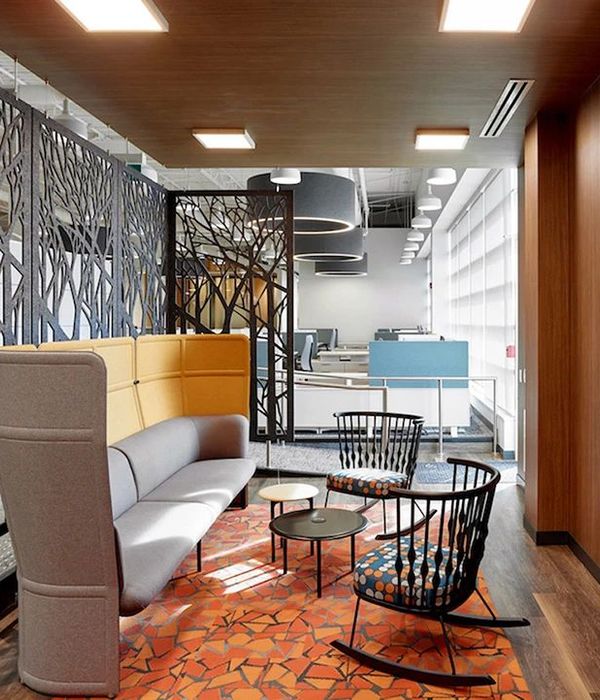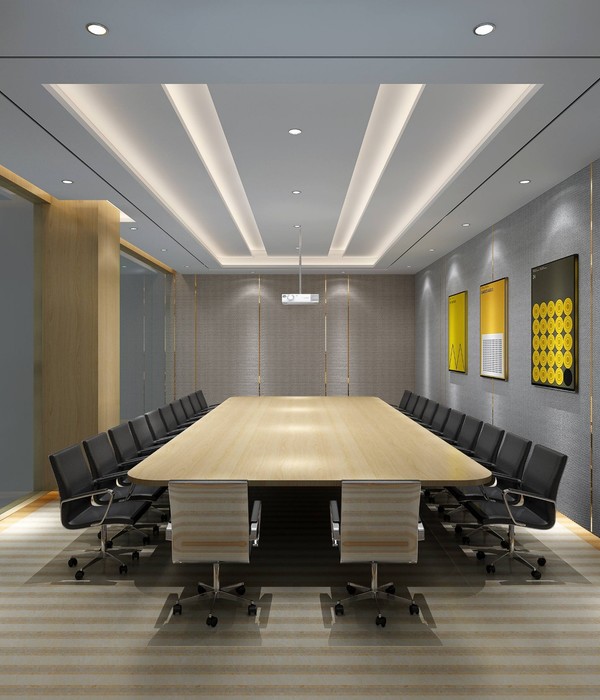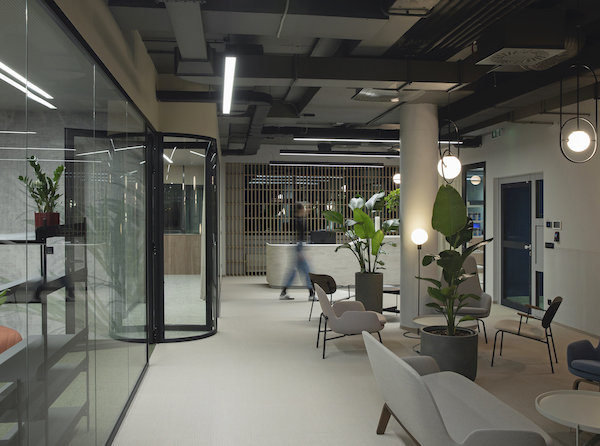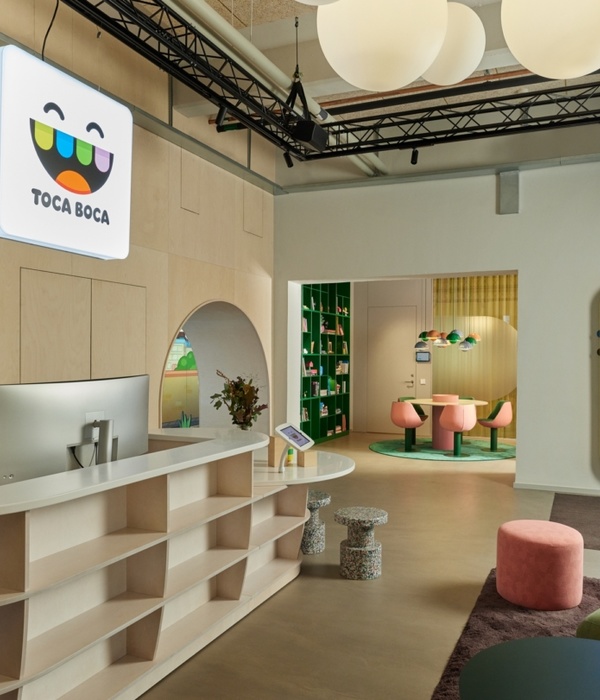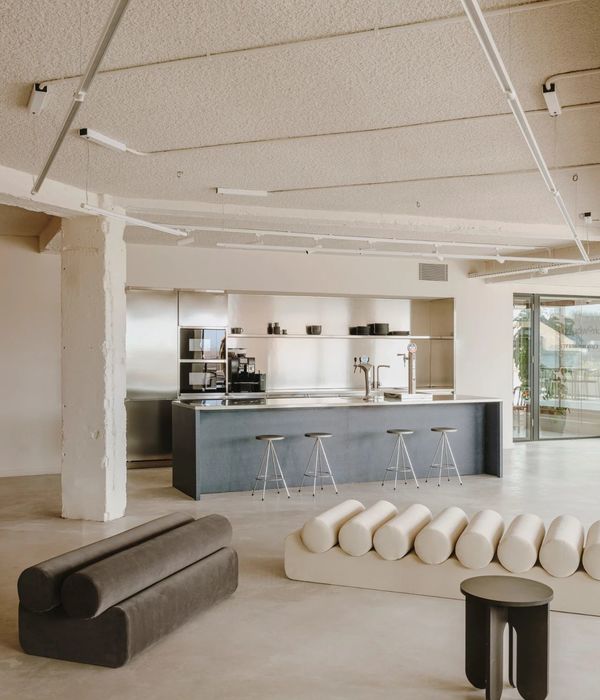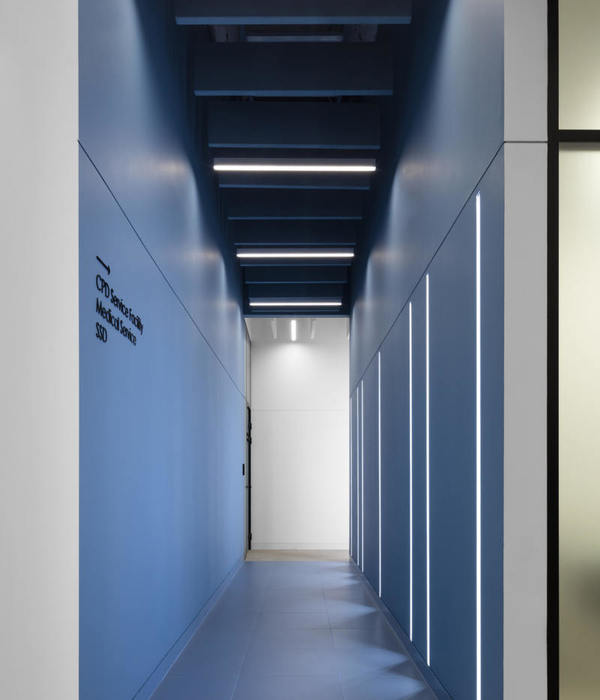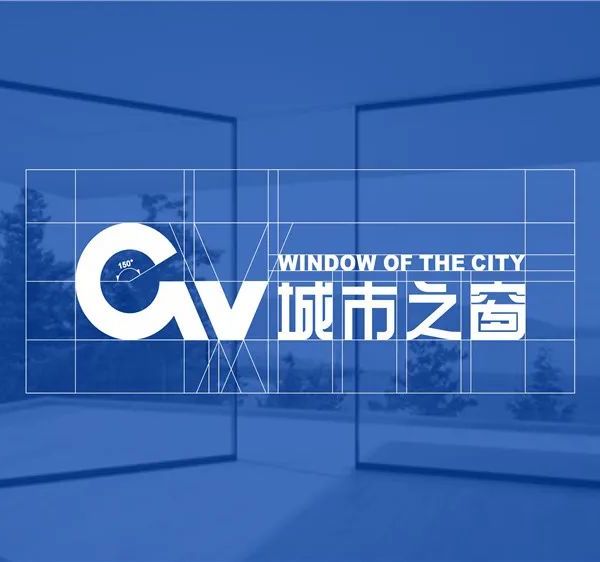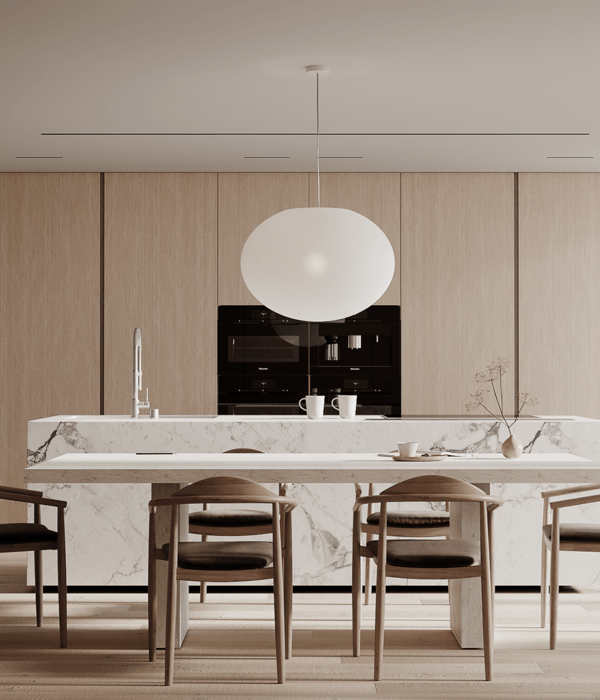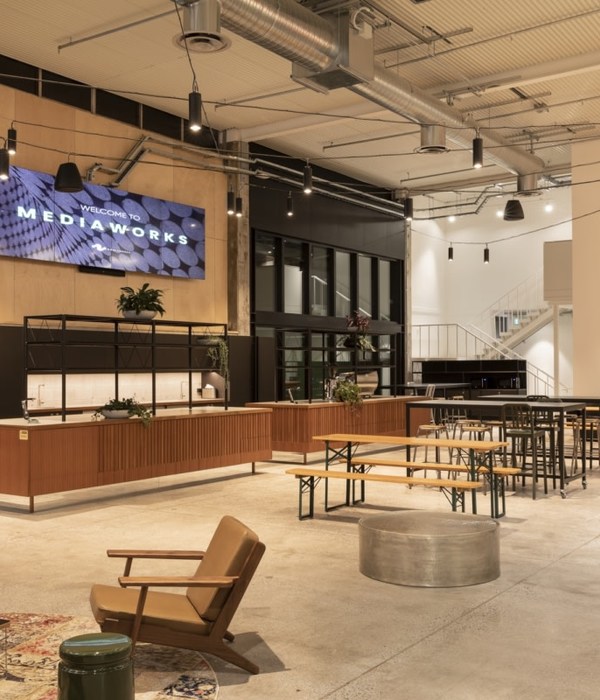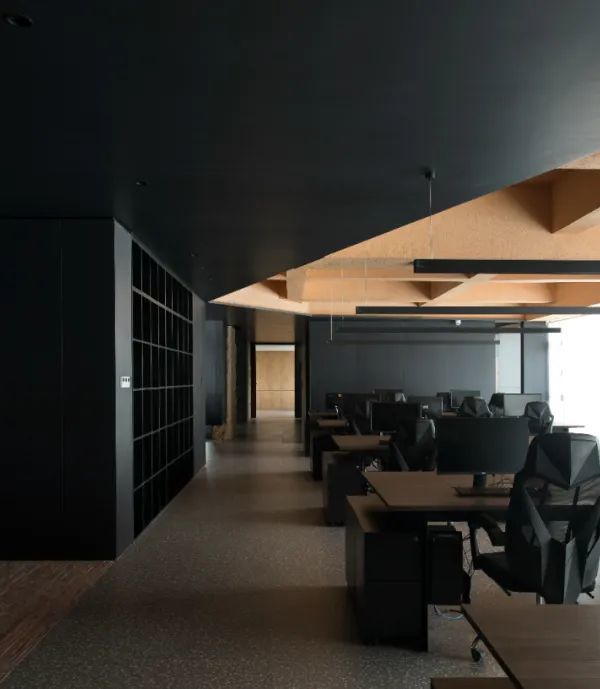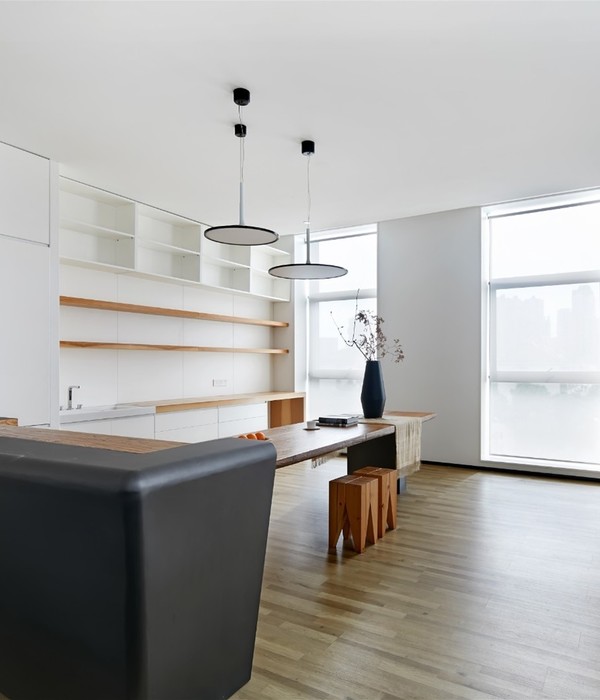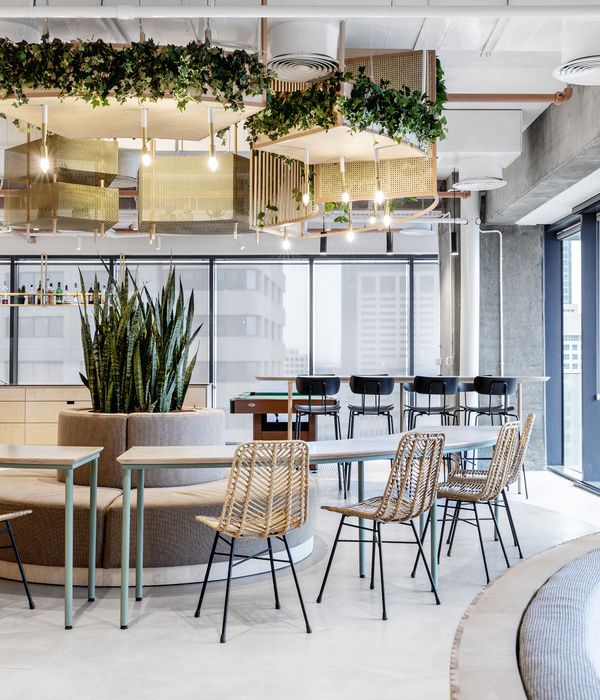- 项目名称:深圳湾超级总部基地城市展厅
- 地理位置:深圳湾超级总部基地片区
- 材料:超白U型玻璃,双层中空彩釉玻璃,古龙灰石材,镜面不锈钢,铝板
- 面积:2000平方米
- 设计周期:2015.12-2016.06
- 建设周期:2016.06-2016.10
- 建筑设计:深圳华汇设计
- 设计团队:肖诚,印实博,毛伟伟
- 景观设计:创翌善策
- 室内设计:空间易想
- 幕墙顾问:朋格
- 建筑摄影:张超,肖诚
概述:项目作为深圳湾超级总部基地首开项目与总体规划的展厅,希望以安静又开放的姿态融入在现有的城市肌理之中,并通过赋予其白玉般的形象映射出片区未来的价值。
Overview: As the exhibition center for the overall planning of the Super Headquarters Base in Shenzhen bay, the project is hoped to melt into the existing urban features with a peaceful and open attitude and reflect the future value of the district by endowing it with the white-jade-like image.
▼建筑外观,External View
深圳湾超级总部基地为由滨海大道、深湾一路、深湾五路、白石三道、白石路所围合的接近117.40公顷的区域,建设规模总量达到450万-550万平方米。功能以总部办公、高端商务配套及部分文化设施为主,将是湾区又一片拔地而起的新城市空间,是深圳着力打造的世界级城市中心。展示中心选址于深湾一路与白石三道交叉口,总部基地的西边,有地铁2号线红树湾地铁站和公交首末站与城市公共交通接驳,周围有大型居住社区,学校,商场,南侧临近深圳湾公园。委托方希望以首开项目为契机,将该区域的发展动态向公众进行展示。
The Super Headquarters Base in Shenzhen Bay is a district of approximately 117.40 hectares in area and of 4.50-5.50 million square meters in total scale of construction, which is surrounded by Binhai Avenue, Shenwan 1st Rd., Shenwan 5th Rd., Baishi 3rd Rd. and Baishi Rd. The main function of buildings include headquarters office, high-end facilities for business and culture. It will turn into a new urban space that springs up in the bay area, as well as a world-class super CBD.The Exhibition Center is located at west side of the Headquarters Base, which is connected to a metro station and a bus terminal. Around it there are large residential communities, schools and shopping malls. It is close to Shenzhen Bay Park on the south. The client hopes to show the development in future of this district to the public with the first project in progress as an opportunity.
▼建筑夜景,External View at Night
由于选址为临时性用地,在完成建筑的使命后将改造为城市公共绿地,并且,在承担公共展示的同时,还需要为首开项目的意向客户提供较为私密的洽谈的空间。这种现实反映出的二元特征也就成为我们设计中试图解释的两层关系:景观与建筑,公共和私密。与此同时,委托方也希望以一种表意于传统的方式,介入未来城市的图景,通过展示中心的空间意向重拾都市生活的人文精神,这也是在全球化的时代背景下的对日常生活空间建构的一次反思。
It is a temporary building with a usage time of 3-5 years. After that ,the site will turn into a public green space. On conducting the presentation to public, the Exhibition Center needs to provide a more private space of business negotiation to the potential clients of the first project. The binary feature reflected by the reality also becomes the two kinds of relationships we try to explain in design: landscape and building, commonality and privacy. Meanwhile, the client also hopes to get involved in the prospect of the future city with traditional intention, and regain the humanistic spirit of urban life by the space intention of the Exhibition Center. This is also a time of introspection on construction of daily life space under the background of globalization.
▼漫反射超白u型玻璃,ultrawhite U-shape glass of diffuse reflection
▼建筑入口,Entrance View
场地南北狭长,西邻城市道路,首先我们制定了一个基本框架,即将用地沿东西方向一分为二,将西侧约三分之二的区域设计为由浅水池,草地和碎石形成的城市景观,人们甚至可以在此嬉戏和小憩,东侧则是建筑主体和内部道路,建筑采用带型集中的方式,形成界面而非实体的外部感受,使得基地环境表现出一种介乎当前和未来的模糊状态,从心理层面为城市空间变化留出了合理的预期,建成的景观也为将来的改造形成一个可持续利用的基础。界面材料,我们选择了漫反射超白u型玻璃,在不同天气下和一天中不同的时间段的能产生细微的变化,地面水景亦是如此,在不同的光环境中,对建筑、天空、树木形成不同的程度的反射、折射和透射效果,构成一种随自然变换的图景。
The site is long and narrow from north to south, with the road on the west. Firstly we formulated a basic framework, that is to say, the land will be divided into two in the latitudinal direction. 2/3 of the area on the west will be designed as urban landscape with lawn, wading pool and gravels. People can frolic and relax here. On the west there are the main body of the building and the internal road. The building is designed into a strip form, which brings on the visual effect of “wall” rather than “volume”.and leads into a fuzzy state between the present and the future. This leaves a reasonable expectation for the urban space psychologically and the completed landscape also forms a foundation of sustainable utilization for the future. We make choice of the ultrawhite U-shape glass of diffuse reflection, which can produce subtle changes in different weather and different daylight. So is the waterscape on the ground. In the different luminous environment, a picture that follows natural transformation is made up of different degrees of reflection, refraction and transmission formed by buildings, sky and trees.
▼水景庭院,a water yard in the middle
此外,在处理空间的私密性上,我们引入一条东西向的隐形边界,将建筑在南北方向上区分为公共部分和私密部分,门厅设置东西两个入口,东侧面向私密人群,西侧面向公众,分别导向两个不同的过厅,并在出口上再次分开,有效地保证了两部分的独立性。在公共区,除展厅之外我们还设计了艺术廊和咖啡厅,以丰富空间的体验性,艺术廊通过不定期无门类的艺术展(如家具、摄影、绘画等)与固定的城市规划展在空间上并置,从理性和感性层面,制造未来城市生活的多重想象,咖啡厅则是为参观的人群提供必要的交流和休息场所。
In dealing with privacy, we introduce an east-west boundary which divides the building of the north-south direction into public and private parts. The foyer is built with two entrances both east and west. The eastern entrance faces private people and the western the public, which separately lead to two different passage halls and separate once again at the exit in order to effectively guarantee the independence of two parts. In the public area, besides the Exhibition Hall, there are an art gallery and a café to enrich the experience of space. The art gallery is set in space through the irregular uncategorized art show (such as furniture, photography, painting and others) and the fixed city planning show to make multiple imagination of future city life both rationally and emotionally. The cafe is to provide a necessary locale of exchange and relaxation to the visitors.
▼入口门厅,Entrance View
▼建筑展厅,Architecture Exhibition View
建筑本身由一个长约130M宽8M的带形服务空间和两个作为被服务空间的展厅构成,服务空间内包含了门厅、艺术廊、茶室、洽谈区等,被服务空间包含了用于公共展示的城市规划展厅和针对私密客户的建筑展厅,展厅沿服务带的西侧布置,在体量上分开,中间留出水景庭院,
The building consists of a strip-like service space of about 130m in length and 8m in width and two exhibition halls as the “served space”. The service space contains an entrance hall, an art gallery, a teahouse, a negotiation area and others while the served space includes an exhibition hall of city planning for public exhibition and an show room of buildings for private clients. These two largest interior space are located at the west side of the service belt and separated in the north and south with a water yard in the middle.
▼展厅,Exhibition View
▼走廊,Corridor
除此之外,我们对两个不同的空间系统采用了不同的材料表现,展厅被漫反射超白U型玻璃包裹,为室内带来柔和的光线和温润的触感,服务带则是深灰色条形彩釉玻璃,二者在肌理上达到了一定的相似和反差。展厅之间的水景庭院,植入一棵松树,并被建筑外墙进行适度围合,为进入营造出安静氛围,低于池顶的步道,使人能够在舒适的高度上触摸到水面,人从城市步入庭院进而进入建筑的空间序列和仪式感被再次唤起。室内空间中的低窗设计,有意回避了周遭纷繁的城市图像,素色的墙地面材料,强化了空间的消隐感,使人与即景产生对话。
We use different materials to two different spatial systems. The exhibition halls are wrapped by the ultrawhite U-shape glass of diffuse reflection, which bring the soft rays of light and a gentle sense of touch to the interior, while the service belt is made of the dark grey strip-type enameled glass. Both of them generate certain similarity and contrast in texture. A pine tree is planted in the water yard. The yard is moderately enclosed by the outside wall, that creates a quiet atmosphere for entry. The lane twhich is lower than the pool enables people to touch water at a comfortable height, which can once again evoke people’s sense of spatial sequence to walk into the building through the garden from the outside. The lower windows in interior space can filter the numerous and complicated city image around. We try to use simple material for wall and floor to create a peaceful space.
▼轴测图,Axonometric
▼总平面,Master Plan
▼总平面,Site Plan
▼平面图,Floor Plans
▼立面图,Elevation
▼剖面图,Section
▼建筑细节,Detail Drawings
项目名称:深圳湾超级总部基地城市展厅
地理位置:深圳湾超级总部基地片区
结构:钢结构
材料:超白U型玻璃,双层中空彩釉玻璃,古龙灰石材,镜面不锈钢,铝板
面积:2000平方米
设计周期:2015.12-2016.06
建设周期:2016.06-2016.10
建筑设计:深圳华汇设计
设计团队:肖诚,印实博,毛伟伟
景观设计:创翌善策
室内设计:空间易想
幕墙顾问:朋格
建筑摄影:张超,肖诚
Project Name: The Exhibition Center of Super Headquarters Base in Shenzhen Bay
Location: The Super Headquarters Base in Shenzhen Bay
Structure: steel structure
Material: Ultrawhite U-shape glass, hollow double glazing, gulong gray stone, mirror-finished stainless steel and aluminum plate
Area: 2000 square meters
Design Cycle: 2015.12-2016.06
Construction Period: 2016.06-2016.10
Architects: Shenzhen Huahui Design Co., Ltd.
Team: Xiao Cheng, Yin Shibo and Mao Weiwei
Landscape Design: Beijing ChuangyiBest Landscape Design Co., Ltd.
Interior Design: Elevation Studio
Curtain Wall Consultant: PAG Facades
Photographs: Zhang Chao and Xiao Cheng
{{item.text_origin}}

